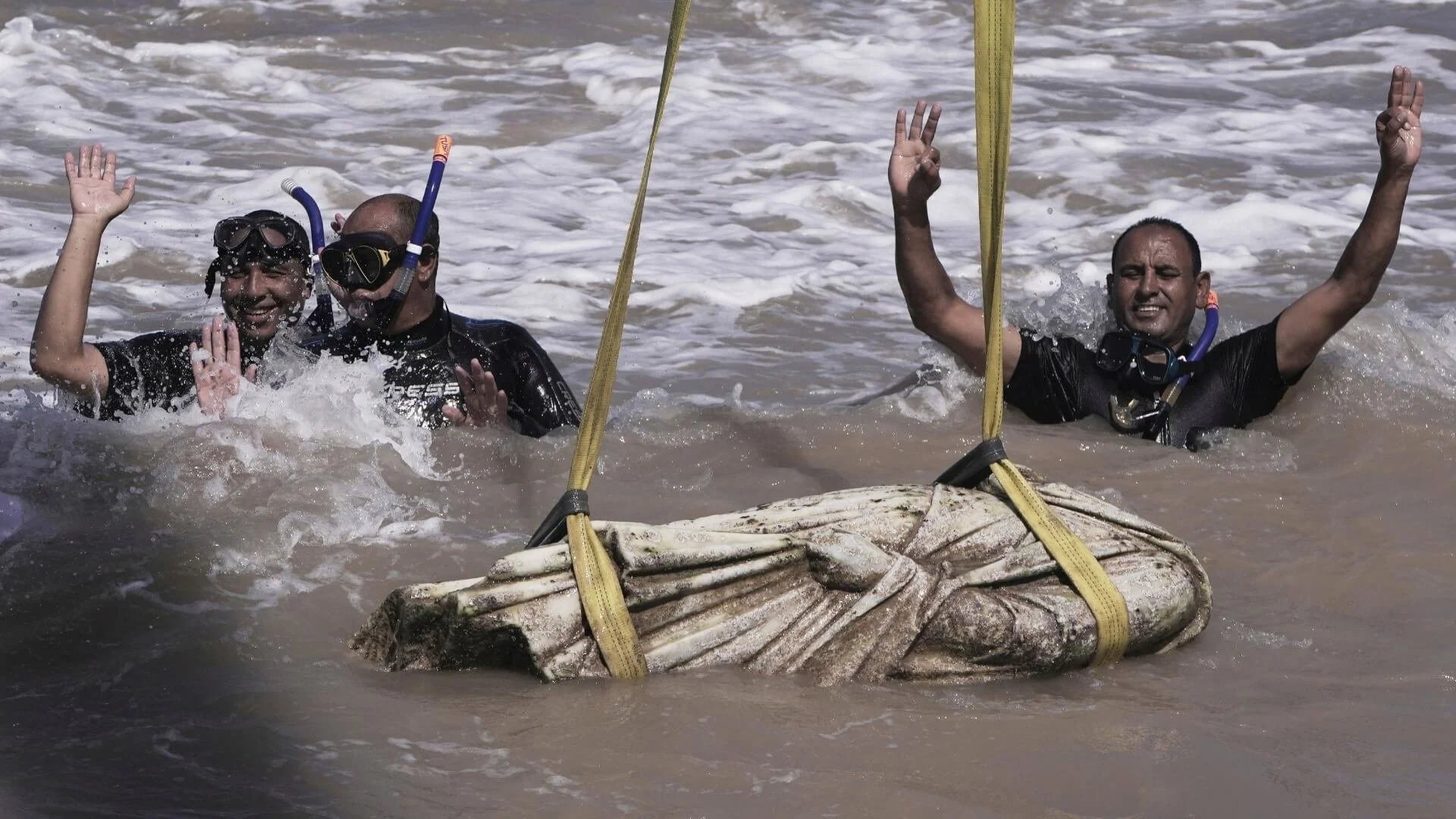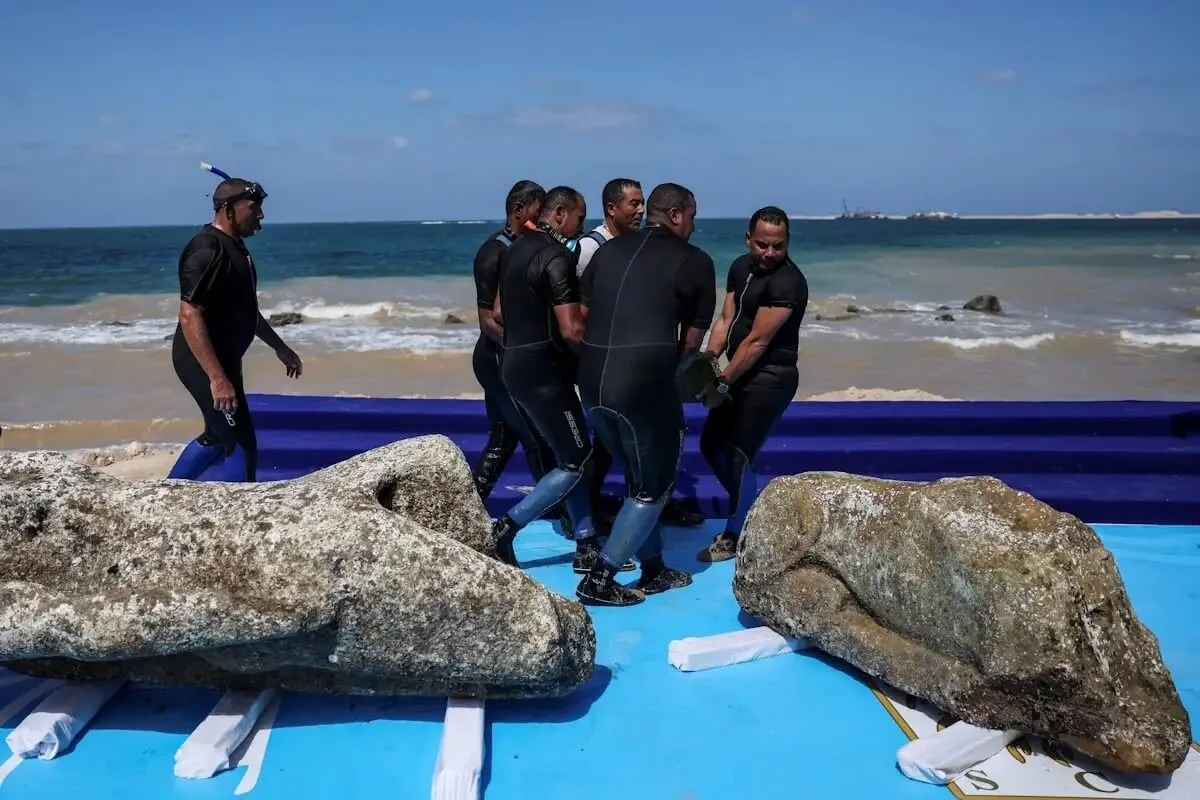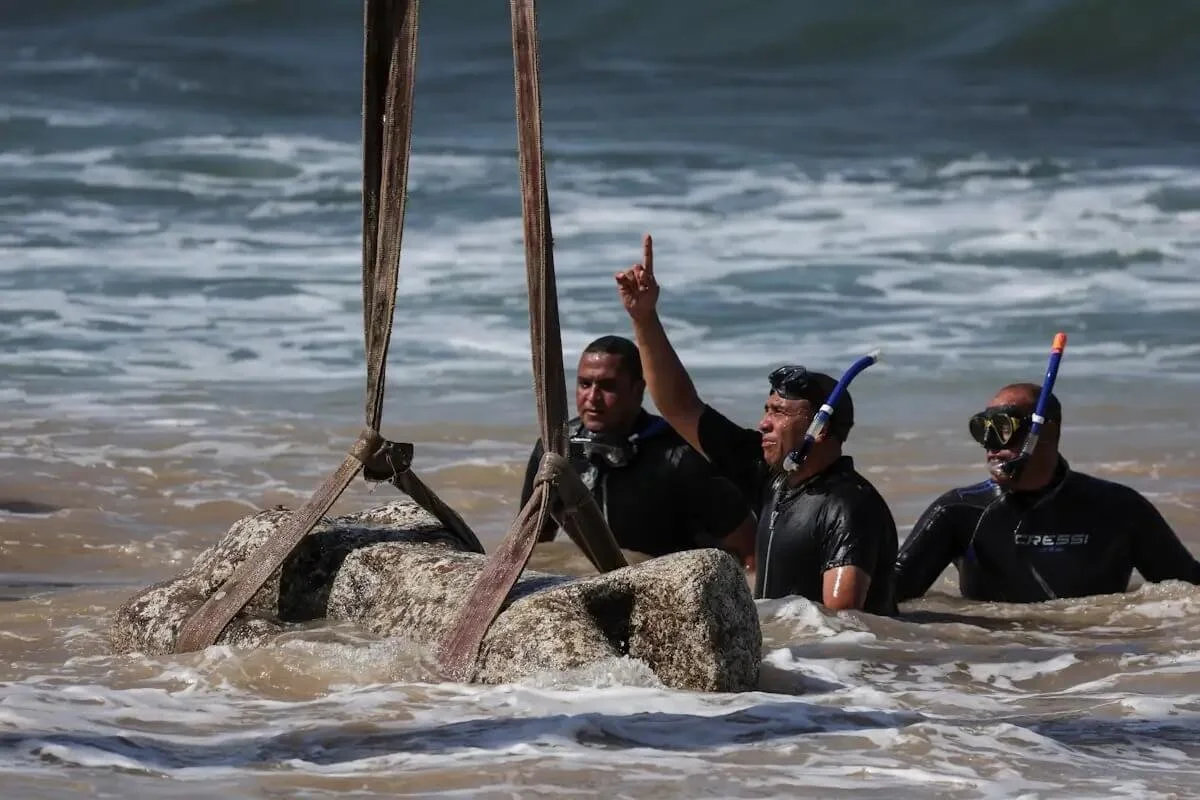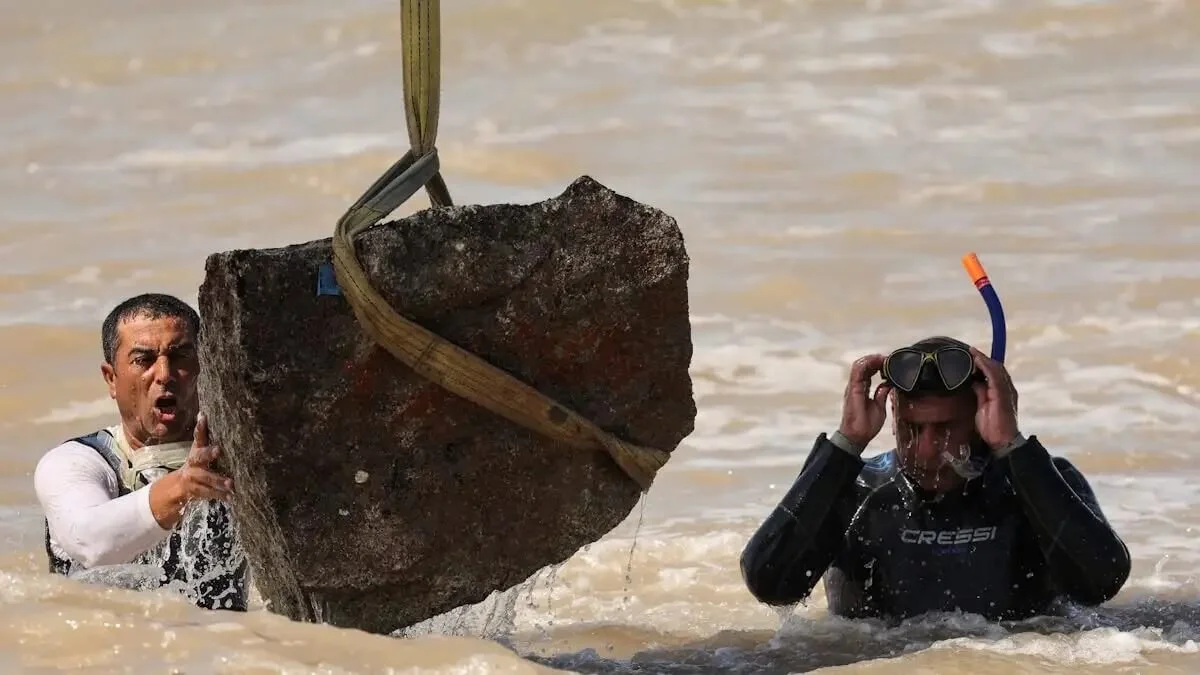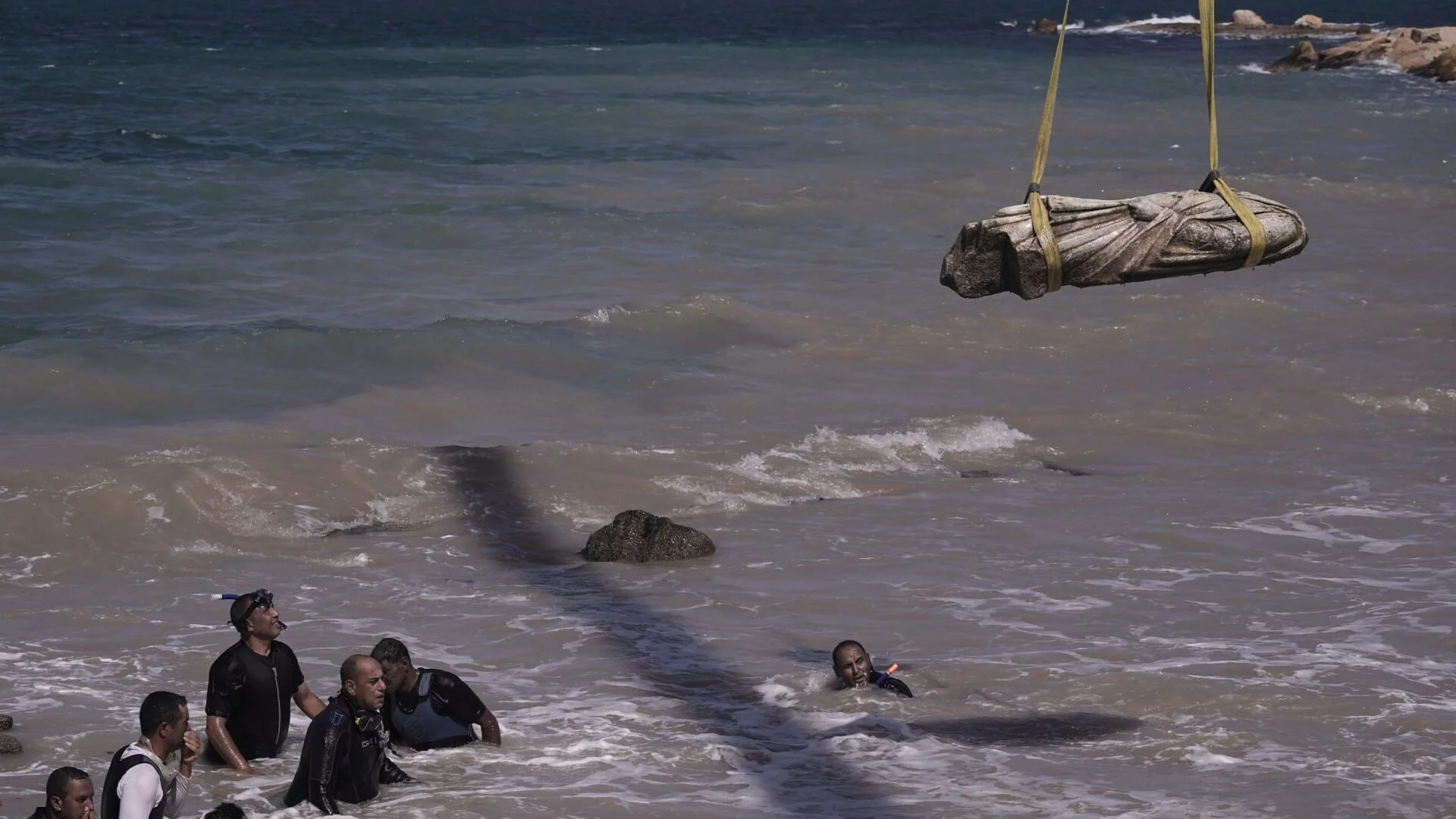In the calm waters of Abu Qir Bay, near Alexandria, a lost piece of history has resurfaced: just days ago, cranes lifted from the seabed rare statues and artifacts that testify to the existence of a once-thriving city, submerged for nearly 2,000 years.
The underwater excavation – the first of its kind in Egypt in 25 years – brought to light extraordinary finds: a quartz sphinx bearing the cartouche of Pharaoh Ramses II, a colossal granite figure from the late Ptolemaic period, and a white marble bust of a Roman nobleman.
Archaeologists also uncovered a wide range of structures: temples, houses, workshops, cisterns carved into the rock for fishing or water storage, and even a commercial harbor about 410 feet (125 meters) long. Among the discoveries were the remains of a merchant ship, stone anchors, and the remnants of an ancient crane.
According to Egypt’s Ministry of Tourism and Antiquities, the site is believed to be part of the ancient province of Canopus, a flourishing city during the Ptolemaic dynasty and the Roman Empire.
Minister Sherif Fathy emphasized that only carefully selected artifacts were retrieved – under strict preservation standards – while many others will remain on the seabed as part of Egypt’s “underwater heritage.”
Dr. Mohamed Ismail Khaled, Secretary-General of the Supreme Council of Antiquities, described the site as a “living testimony” to Egypt’s long and layered history.
The significance of this discovery extends beyond archaeology. It highlights Egypt’s relationship with its maritime heritage while also drawing attention to modern threats: today, Alexandria is sinking by an estimated 0.1 inches (3 millimeters) per year due to climate change. UN projections suggest that by 2050, nearly a third of the city could be submerged or uninhabitable.
The recovery of these ancient treasures is not only a scientific triumph but also an invitation for reflection – a journey back into the past and a warning for the future. Plans are already underway for a major exhibition dedicated to “the mystery of the sunken city,” which will be hosted at the National Museum of Alexandria.
Photos: Associated Press, REUTERS / Amr Abdallah Dalsh

